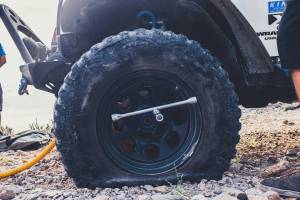
How to Change a Tyre on Your 4x4 Rental: A Step-By-Step Guide
The lure of the open road is what draws so many adventurers to southern Africa....
 7 January 2026
7 January 2026 
Flanked by Devil’s Peak and Lion’s Head, Table Mountain makes up the northern end of the Cape Fold mountain range. This UNESCO World Heritage Site and named as a seven wonder of the world, is a haven of magnificent mountains plunging into crystal seas fringed with bleached white sands of the Cape Peninsula.
You don’t have to know much about plants to appreciate Table Mountain’s rich biodiversity. The 57-square kilometre area comprising Table Mountain and the Back Table is home to more than 1,470 floral species, many of them endemic to the area. The vegetation is mainly endangered Peninsula Sandstone Fynbos, but you’ll also find critically endangered Peninsula Granite Fynbos, Peninsula Shale Renosterveld and small sections of Afromontane forest.
The biggest cat you are likely to see (if you are very lucky) is the rooikat (caracal). The mountain is also home to dassies (rock hyrax), porcupines, mongoose, snakes, tortoises and a rare amphibian called the Table Mountain Ghost Frog. However, on the raptor front, you might catch a glimpse of Jackal buzzards, Booted eagles, African harrier-hawks, Peregrine falcons and Rock kestrels.